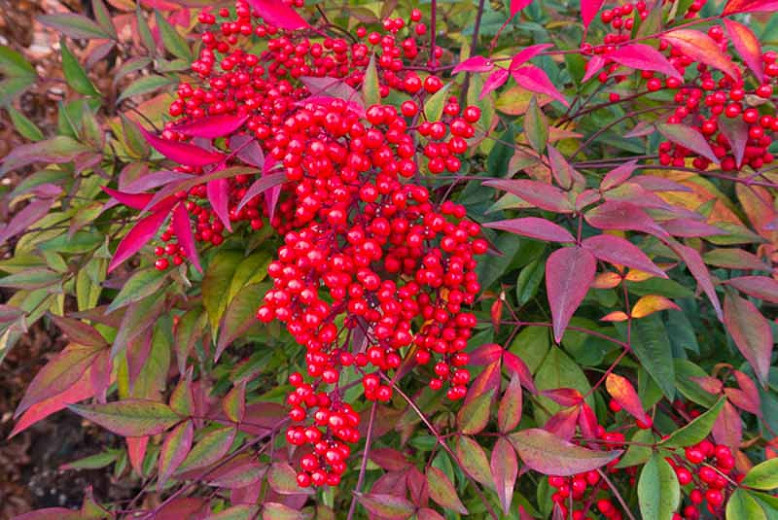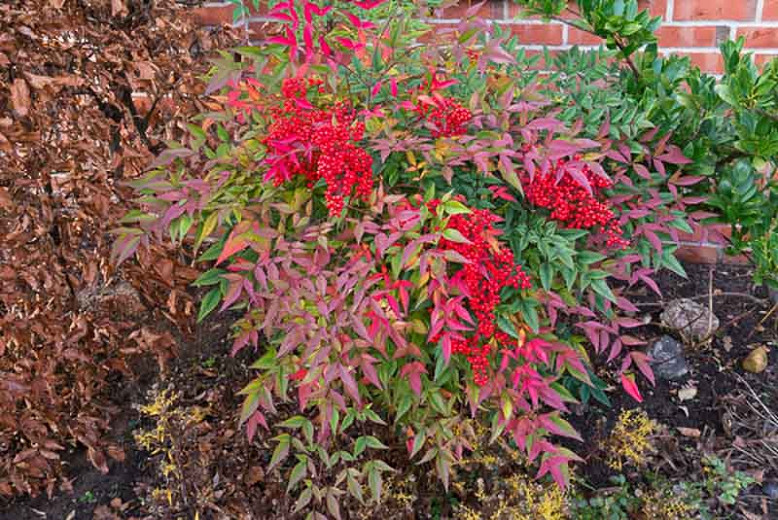The Complete Guide To Nandina Domestica
The Complete Guide to Nandina Domestica
Nandina domestica, commonly known as heavenly bamboo, is a versatile and easy-care evergreen shrub that can be grown in a variety of conditions. It is native to China and Japan, but it is now grown all over the world. Nandina is known for its attractive foliage, which can be green, red, or variegated. It also produces small, white flowers in the spring and summer.
Benefits of Growing Nandina
There are many benefits to growing Nandina. Here are a few of the most notable:
- Attractive foliage: Nandina has beautiful foliage that can add color and interest to any garden. The leaves can be green, red, or variegated, and they often change color throughout the year.
- Drought tolerant and low maintenance: Nandina is a drought-tolerant plant that requires very little care. Once it is established, it can withstand long periods of dry weather.
- Attracts birds and butterflies: Nandina's flowers and berries attract birds and butterflies to the garden. This can be a great way to add wildlife to your space.
- Provides year-round interest: Nandina's foliage remains attractive throughout the year, even in the winter. This makes it a great choice for gardens that need to look good all season long.
- Can be used as a privacy screen or as a decorative accent plant: Nandina can be grown as a privacy screen or as a decorative accent plant. It can also be used to fill in gaps in the garden.
- Produces edible berries: Nandina's berries are edible, but they are not very flavorful. They can be used to make jam or jelly.
Growing Nandina
Nandina is a relatively easy plant to grow. It prefers full sun or partial shade and well-drained soil. It is tolerant of a wide range of soil pH levels, but it does best in slightly acidic soil. Nandina is drought tolerant, but it will benefit from regular watering during the summer months.
Pruning Nandina
Nandina does not require a lot of pruning. However, it is a good idea to prune it once a year in the spring. This will help to keep it in shape and encourage new growth. You can also prune Nandina to control its size or to shape it into a specific form.
Propagation Nandina
Nandina can be propagated by seed, division, or cuttings. Seed propagation is the least successful method, but it is possible. Division is the most common method of propagation. To divide Nandina, simply dig up a mature plant and separate the roots into several clumps. Cuttings can also be used to propagate Nandina. To take cuttings, simply cut a 6- to 8-inch section of stem from a healthy plant. Remove the bottom leaves from the cutting and plant it in a pot of well-drained soil. Keep the soil moist and the cutting should root in a few weeks.
Problems with Nandina
Nandina is a relatively problem-free plant. However, it can be susceptible to a few pests and diseases. The most common pests that attack Nandina are aphids, scale insects, and spider mites. The most common diseases that affect Nandina are leaf spot and rust.
Conclusion
Nandina domestica is a beautiful and versatile plant that can be grown in a variety of conditions. It is a great choice for gardens that need to look good all year round. If you are looking for an easy-care plant that can add color and interest to your garden, Nandina is a great option.
Nandina domestica, also known as heavenly bamboo, is a beautiful and versatile evergreen shrub that is native to Asia. It is known for its colorful foliage, which can change color throughout the year. In the spring, the leaves are a bright green, but they turn red in the fall and winter. Nandina domestica is also a popular choice for landscaping because it is relatively easy to care for and is resistant to pests and diseases.
If you are interested in learning more about nandina domestica, I recommend visiting Garden Wiki. This website provides a wealth of information about the plant, including its history, care, and cultivation. You can also find photos of different cultivars of nandina domestica, as well as tips on how to plant and care for the plant in your own garden.
FAQ of nandina domestica
Question 1: What is Nandina domestica?
Answer: Nandina domestica is a broadleaf evergreen shrub native to Asia. It is known for its colorful foliage, which can be red, orange, or yellow in the fall. Nandina is also a relatively low-maintenance plant, making it a popular choice for landscaping.
Question 2: What are the best growing conditions for Nandina domestica?
Answer: Nandina grows best in moist but well-drained soil that is slightly acidic. It prefers full sun, but can tolerate partial shade. Nandina is hardy in USDA zones 6-9, and can withstand temperatures as low as -10 degrees Fahrenheit.
Question 3: How do I care for Nandina domestica?
Answer: Nandina is a relatively low-maintenance plant, but it does require some care. Water regularly, especially during the summer months. Fertilize once a year in the spring with a balanced fertilizer. Prune in the spring to remove dead or damaged branches.
Question 4: What are some common problems with Nandina domestica?
Answer: Nandina is a relatively pest- and disease-resistant plant, but it can be susceptible to a few problems. These include:
- Scale insects
- Anthracnose
- Leaf spot
- Rust
If you notice any problems with your Nandina, consult with a nursery professional for treatment recommendations.
Question 5: How long does Nandina domestica live?
Answer: Nandina can live for many years, with some individual plants living for over 100 years. With proper care, your Nandina should thrive for many years to come.
Image of nandina domestica
5 different images of Nandina domestica from Pinterest:
- Image 1: A close-up of the red berries of Nandina domestica.

- Image 2: A full-grown Nandina domestica shrub in full bloom.

- Image 3: A Nandina domestica shrub with its leaves turning red in the fall.

- Image 4: A Nandina domestica shrub planted in a pot on a patio.

- Image 5: A Nandina domestica shrub with its cascading branches.

Post a Comment for "The Complete Guide To Nandina Domestica"